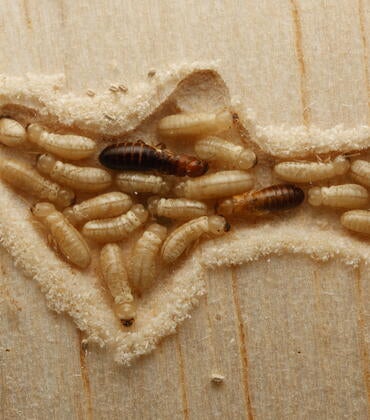
What if your house plant could tell you your water isn’t safe? Scientists are closer to realizing this vision, having successfully engineered a plant to turn beet red in the presence of a banned, toxic pesticide.
(Sean Cutler/UCR)
To achieve this, UC Riverside researchers had to solve an engineering puzzle: how to enable a plant to sense and react to a chemical in the environment without damaging its ability to function normally in all other respects.
“The biggest piece here is we’ve developed new ways to repurpose plants so that they can act as environmental sensors,” said Ian Wheeldon, professor of chemical and environmental engineering at UCR. “A key challenge was to do this without disrupting the plant's ability to grow and develop properly. This new system achieved this, as best we can tell.”
A new paper detailing the chemistry behind the achievement has been published in the journal Nature Chemical Biology. The engineering process begins by "hacking" a protein that senses a plant hormone called abscisic acid, or ABA, which helps plants acclimate to stressful changes in the environment.
During a drought, soil dries and plants produce ABA. Additional proteins, called receptors, help the plant recognize and respond to ABA. This in turn tells the plant to close pores in its leaves and stems so less water evaporates, and the plant is less likely to wilt.
Last year the research team demonstrated that ABA receptor proteins can be trained to bind to chemicals other than ABA. This breakthrough enabled them to create sensors for many chemicals, including banned pesticides.
These new receptors can be used to create chemical diagnostic tests, for example, but what the team wanted to do was engineer living plant sensors, which required extensive rewiring of the receptor system. Using their improved system, they successfully engineered plants to turn beet red when the receptor senses a target chemical.
For this demonstration the team used azinphos-ethyl, a pesticide banned in many places because it is toxic to humans.
“Our goal is to be able to easily detect chemicals in the environment from a distance,” said Sean Cutler, UCR professor of plant cell biology. “If you had a field of these and they turned red, that would be a pretty obvious visual indicator that someone was using the banned pesticide.”
As part of the same experiment, the research team also demonstrated the ability to turn another living organism into a sensor: yeast. The team was able to show a response in yeast to two different chemicals at the same time. Now they're working on doing this in plants.
“It would be great if we could eventually design plants that sense dozens of chemicals so we could use them as living sensors that persist for years and provide environmental information,” said Cutler. “The more sensors we can stack in a single plant, the better, especially for environmental applications. But there are limits to what we can engineer for these new sensing capacities. Currently we're only detecting two chemicals at once.”
To be clear, these plants are not being grown commercially. That would require regulatory approvals that would take many years. It is also a new technology, with a suite of issues that would need to be addressed before it could be used in farmers’ fields, or elsewhere in the real world. However, the discovery opens up possibilities.
“We engineered plants to turn beet red when they sense a banned chemical, and we're working towards being able to sense any chemical in the environment,” Cutler said. “Not just pesticides, but drugs like pharmaceuticals and antibiotics in the water supply, things people are worried about being exposed to. These kinds of applications are within reach now.”





